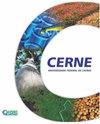The influence of clear-cut area size on forest regrowth: a case study in the dry tropical forests of Pernambuco, Brazil
IF 0.7
4区 农林科学
Q3 FORESTRY
引用次数: 0
Abstract
ABSTRACT Background: Managed Caatinga forests in Northeast Brazil are an important source of wood products, however, successful regeneration and regrowth is important to guarantee sustainability in these forests. The main objective of this study was to evaluate the natural regeneration and forest regrowth ability of a Caatinga forest under varying clear-cut treatments, as well as to estimate the recovery time of stand parameters. Results: An experiment was set up in Petrolina, Pernambuco state, Brazil, comparing five clear-cut strip widths: 0, 40, 60, 80 and 100 meters. Forest inventory data was gathered before and eight years after harvesting in 19 plots of 10 x 40 m. Tree seedling regeneration (individuals with circumference at breast height < 6 cm and minimum height of 0.5 m) was also monitored in 5 x 5 m sub plots, before harvesting, one, three and eight years after harvesting. Conclusions: No influence of the clear-cut strip width on regeneration and forest regrowth ability was detected, with all treatments presenting similar growth and tree species diversity and similarity values. The estimated growth rates of the clear-cut plots were of 0.12 m2·ha-1·year-1 and 0.39 m3·ha-1·year-1 for basal area and volume, respectively, resulting in recovery times of 35 and 49 years, longer than the 15 years cycles generally adopted in Caatinga forest management plans. HIGHLIGHTS Appropriate management of Caatinga forests ensures fast recovery after interventions. Clear-cut strips between 0 and 100 m did not influence regeneration and forest regrowth. Species diversity was lower in clear-cut than in control plots after 8 years. Recovery time after clear-cut for basal area and volume was 35 and 49 years, respectively.砍伐面积大小对森林再生的影响:以巴西伯南布哥干燥热带森林为例
本文章由计算机程序翻译,如有差异,请以英文原文为准。
求助全文
约1分钟内获得全文
求助全文
来源期刊

Cerne
农林科学-林学
CiteScore
1.60
自引率
0.00%
发文量
2
审稿时长
6-12 weeks
期刊介绍:
Cerne is a journal edited by the Federal University of Lavras, Minas Gerais state, Brazil, which quarterly publishes original articles that represent relevant contribution to Forestry Science development (Forest ecology, Forest Management, Silviculture, Technology of Forest Products).
 求助内容:
求助内容: 应助结果提醒方式:
应助结果提醒方式:


